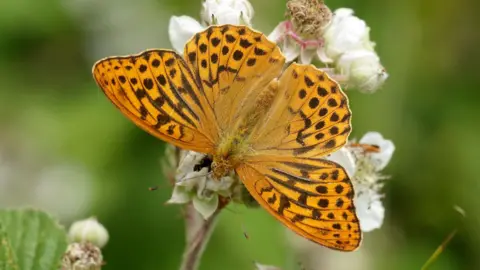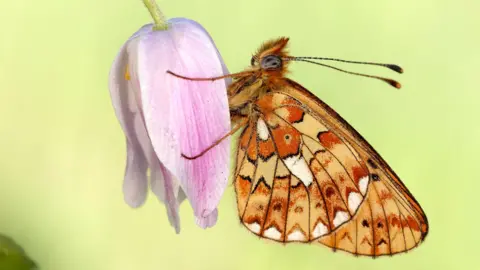'Concerning drop' in number of butterfly species
 Iain H Leach
Iain H LeachThe number of four species of butterfly in Devon were at their lowest for at least a decade in 2024, new figures show.
Butterfly Conservation said the number of silver-washed fritillary, dark green fritillary, wood white and small heath were lower than at any time in the past 10 years.
The numbers come from the UK Butterfly Monitoring Scheme (UKBMS) and Butterflies for the New Millennium (BNM).
The charity's Devon branch recorder, Pete Hurst, said humans had "destroyed wildlife habitats", and said poor weather meant "already depleted" populations were vulnerable and unable to bounce back.
 Iain H Leach
Iain H LeachIt comes after the charity revealed 2024 was the fifth worse year overall for butterflies across the UK, with more than half of species in long-term decline for the first time on record.
Mr Hurst extracted figures for 10 local butterfly species in the county.
The figures showed the silver-washed fritillary was 26% lower than the previous lowest count and 38% lower for the whole 10-year period.
The dark green fritillary was 37% lower than the previous lowest count and 60% lower for the same 10-year period.
 Jim Asher
Jim Asher"Unfortunately, these figures show concerning drops in the numbers of beloved local butterfly species in Devon," Mr Hurst said.
He added: "Unfortunately, these figures show concerning drops in the numbers of beloved local butterfly species in Devon.
"This is in line with the national picture, and I would expect there to be similar reductions in other Devon species as well."
Mr Hurst said long spells of wet weather would have had a "significant negative impact" on butterflies - but he said there was "much more at play".
He said damage to habitats, pollution, and the use of pesticides on an "industrial scale" had contributed to the decline - adding climate change meant unusual weather was becoming "more and more usual".
Follow BBC Devon on X, Facebook and Instagram. Send your story ideas to [email protected].
